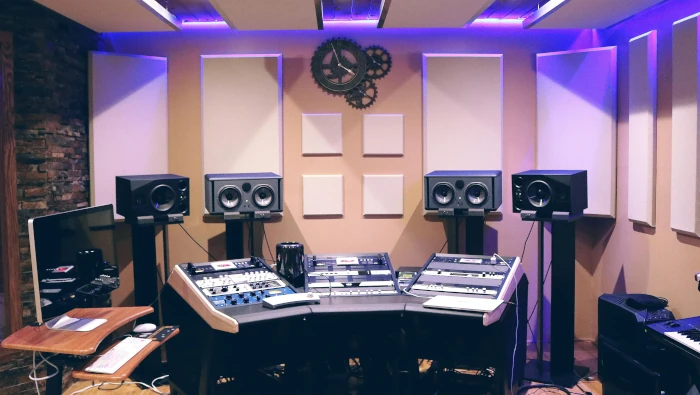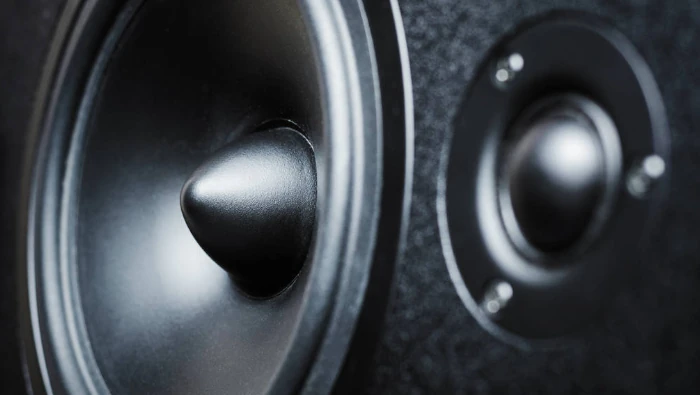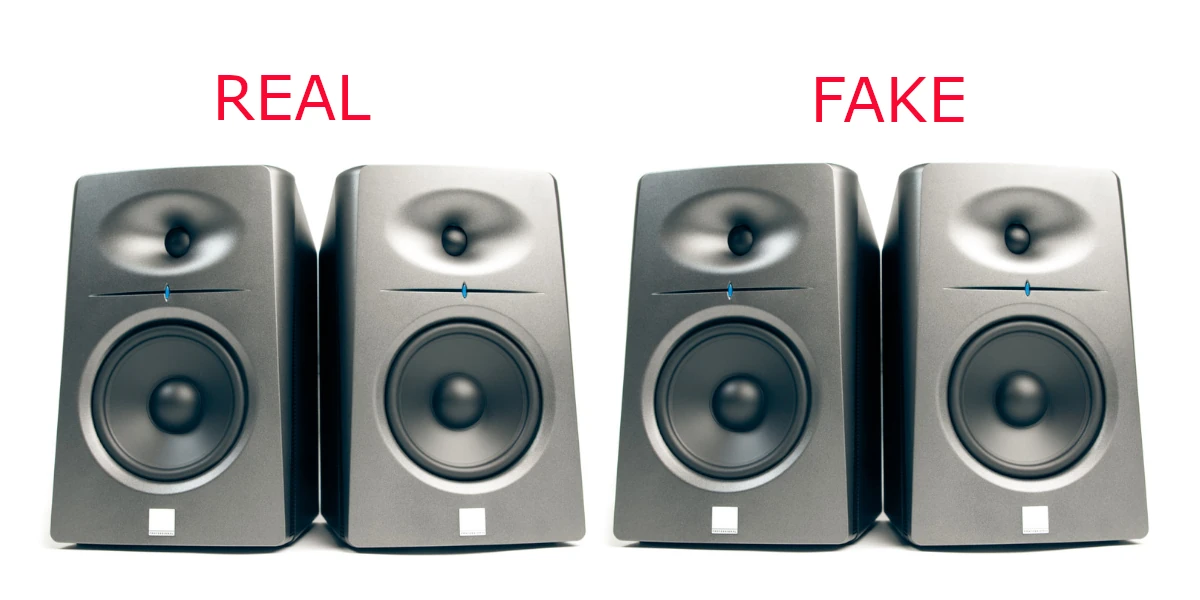Ahoy, music creators and sound aficionados! Picture this: Your studio is your sanctuary, the place where creativity flows as freely as the melodies that fill the air. It’s where your auditory masterpieces come to life, all thanks to those powerful guardians of sound, audio studio monitors. These aren’t just any speakers; they’re the critically acclaimed ears of your recording studio, responsible for presenting the purest form of sound recorded, edited, and mastered under your keen oversight.
But what if I told you there’s a hidden danger lurking in the shadows of this creative haven? A threat so deceptive, it could compromise the very essence of your music without you even realizing it. Yes, we’re talking about the clandestine world of pirated audio studio monitors—a peril often overlooked yet so damaging to the authenticity and quality of your sound projects.
Embarking on this cautionary journey today, we aim to shed light on the importance of ensuring the gear that fills your studio is as genuine as your passion for music. The tale to unfold is not just a narrative; it’s a critical lesson and a stark warning about the risks of piracy in the world of professional audio monitoring. By paying heed, you’re not just protecting your equipment; you’re safeguarding the integrity of the sound you tirelessly work to perfect.
So, buckle up and prepare to dive deep into the saga of audio studio monitors, where we unravel the mystery of counterfeits and proclaim the valor of vigilance. Let this exploration serve as your guide in fortifying the sanctity of your sound sanctuary against the pirates masquerading in the open seas of the audio industry.
The Vital Role of Audio Studio Monitors

In the heart of every recording studio, audio studio monitors stand as the gatekeepers of sound quality. These aren’t just any ordinary speakers. They’re the critical ears of audio engineers, offering an unembellished reflection of the music being recorded, mixed, mastered, or even conceived from scratch. The journey from a melody in the artist’s head to a track that resonates in the hearts of listeners is nuanced, complex, and filled with technical intricacies. And at every step of this journey, accurate sound reproduction is non-negotiable.
For those who breathe life into music, the role of audio studio monitors is paramount. Think of them as the unsung heroes in the backdrop of chart-toppers and soul-stirring melodies. A monitor’s ability to present frequencies across the spectrum, from the deepest bass to the highest treble, with unerring accuracy, is what makes it indispensable. Whether it’s the whisper of a violin or the boom of a bass drum, each sound must be heard in its truest form.
The Importance of Fidelity
Why is this so important? In the alchemy of music production, every decision—from the slight adjustment of an equalizer to the addition of a reverb effect—is made based on what the engineer hears. If the monitors are coloring the sound, boosting certain frequencies while neglecting others, it can lead to a mix that sounds perfect in the studio but far from ideal anywhere else. This is why the fidelity of audio studio monitors is not just a preference but a prerequisite for professional sound production.
Moreover, audio studio monitors serve as an objective benchmark during the meticulous process of mixing and mastering. They allow audio engineers to sculpt the sound with precision, ensuring that the final product remains true to its intended artistic vision regardless of where it’s played—be it a colossal concert hall or through the earbuds of a smartphone.
In essence, the quality of audio studio monitors directly influences the fidelity of the sound that eventually reaches our ears. They ensure that what’s heard in the recording studio translates into an authentic auditory experience in any setting. Without these trusty companions, the journey from an artist’s vision to a listener’s delight would be fraught with uncertainties. In the world of music production, where excellence is the only currency, the role of audio studio monitors is indeed vital.
The Uncanny Comparison: Studio Monitors and LCD Screens

Ever wondered why audio studio monitors are often compared to LCD screens? At first, this analogy might seem a bit far-fetched, but the comparison holds significant weight, especially in the realms of clarity, resolution, and the overall quality of the output.
Just as an LCD screen with higher resolution offers a more detailed and crisp visual experience, an audio studio monitor with a wider frequency range can reproduce sounds more accurately. This accuracy is crucial for audio engineers whose aim is to finetune every nuance of sound in recordings, edits, and masterings.
Importance of Accurate Representation
Imagine trying to edit a photograph for print on a low-resolution screen. You might miss minor imperfections that could mar the final product. Similarly, working with subpar monitors in a recording studio could result in audio tracks that sound different than intended when played on other devices. This discrepancy can lead to music that sounds unbalanced or lacking in depth when heard outside the studio environment.
High-quality studio monitors, akin to top-notch LCD screens, provide a canvas that’s true to the source. They ensure that what you’re hearing during production is a faithful representation of the audio, with all frequencies represented accurately. This level of precision allows audio professionals to make informed decisions about mixing and mastering, ultimately leading to a better end product.
In this light, choosing the right studio monitors becomes analogous to selecting the perfect screen for elaborate graphic design work. It’s all about having the right tools that offer an accurate representation of your work, allowing for the production of quality output that stands the test of diverse playback environments.
So, the next time you ponder over the importance of investing in high-quality audio studio monitors, remember the LCD screen analogy. Just as you wouldn’t compromise on screen resolution for high-stakes visual projects, the same principle applies to sound production. Opting for professional-grade monitors is not just an expenditure but an investment in the fidelity and integrity of your audio work.
A Pirate’s Tale: The Stolen Monitors

In the heart of our story lies an incident that took everyone by surprise, transforming an ordinary weekend into a pivotal moment for our studio. This section unravels the astonishing story of how our trusted audio studio monitors, the essence of our sound production, vanished into thin air—a tale that reads like a script from a pirate’s adventure, yet with implications far too real for any of us involved.
The day began like any other Monday, with the team gearing up to dive back into our project, an ambitious album featuring 23 tracks that had us mixing tunes into the wee hours of the night. Our reliable JBL Pro monitors had been our companions, faithfully reproducing every note, albeit with a bit too much bass for our liking. Little did we know, the weekend had set the stage for a staggering revelation.
Upon arrival, the unsettling silence that greeted us wasn’t from the usual, anticipated calm before the storm of creativity. Instead, it was the glaring absence of our prized JBL studio monitors that cast a shadow over the room. Stolen—yes, taken right from under our noses by someone who had stealthily managed to gain access to our sanctuary of sound.
Unveiling Deception: A Studio’s Awakening
The shock was palpable, the confusion, undeniable. The theft wasn’t just a loss of valuable equipment but a betrayal of our studio’s safe haven. In a move that demonstrated foresight, the studio owner had fortunately insured the equipment against such unforeseeable incidents. It provided a thin silver lining in the form of compensation that enabled the acquisition of what we believed were identical replacements for our pilfered monitors.
Little did we know, this misfortune was a disguise for an enlightening revelation that would soon unfold, casting light on a deception we had unknowingly been a part of. The discovery that followed would not only unravel the mystery of the unusual sound balance we had grown accustomed to but also open our eyes to the murky waters of piracy within the realm of professional audio equipment.
In this pirate’s tale, instead of treasure maps and swashbuckling rogues, we found ourselves navigating through the shadowy world of counterfeit goods, learning a crucial lesson about vigilance and the value of genuine audio studio monitors.
The Unraveling of a Deception

In the aftermath of an unsettling studio burglary, our narrative took an unexpected turn. Initially, the loss seemed irreplaceable—a pair of JBL Pro audio studio monitors, instrumental in our ongoing project. However, the swift action by the insurance provided a semblance of relief, promptly replacing our stolen treasures. Yet, as we eagerly tested the new monitors, a startling revelation emerged.
The notorious bass imbalance that had subtly plagued our mixes was conspicuously absent. This anomaly sparked a series of questions and doubts, leading us to a profound discovery. The monitors we had long relied upon weren’t genuine JBL Pros but sophisticated imitations. The stark contrast in sound quality between the original and replacement units unraveled the mystery behind the earlier audio discrepancies.
Lessons Learned: Preserving Integrity in Sound
This episode served as a stark wake-up call to the dangers lurking within the marketplace for professional audio equipment. The counterfeit technology had been so convincingly integrated into what appeared to be genuine monitors that it took a theft and subsequent replacement to unveil the truth. It highlighted the sophisticated lengths to which piracy ventures would go to mimic professional-grade equipment, casting a shadow of doubt over the authenticity of seemingly high-quality gear.
Furthermore, it underscored a critical lesson for us and, by extension, the broader community of audio engineers and studio owners. While we place our trust in technology to capture, edit, and master soundscapes, vigilance must be our watchword. The incident magnified the importance of verifying the authenticity of every piece of equipment that enters our studios. It wasn’t merely about the monetary loss or the inconvenience of replacing stolen gear but preserving the integrity of the sound we diligently work to perfect.
In navigating the choppy waters of audio equipment procurement, this episode imparts a valuable guidepost. Trust but verify. The allure of a good deal or the comfort of familiar branding should never eclipse the due diligence required to ensure that what sits within our studios is the genuine article. The quality of our work and the integrity of the music produced hinge upon the authenticity and reliability of our tools.
As we moved forward, the stolen monitors served as a poignant reminder of the risks of piracy, not just in terms of copyright infringement but in the very equipment we use to create art. This realization fortified our resolve to safeguard our creative sanctuary against the specter of deceit, ensuring that every note, every beat, and every melody is captured as truthfully as possible.
The Final Note: Safeguarding Your Sound Sanctuary
As we draw the curtain on our cautionary tale of piracy within the world of audio studio monitors, it becomes abundantly clear: vigilance is paramount. In the quest for authentic, superior sound quality, the path is fraught with pitfalls, masquerading as deals too good to pass up. Yet, it’s these very “bargains” that often lead unsuspecting audio enthusiasts into the murky waters of counterfeit gear.
Navigating the marketplace for genuine equipment demands a discerning eye. The allure of slashed prices and seemingly identical clones can be tempting, but it’s essential to remember—the value of your sound cannot be compromised. Testing, thorough scrutiny, and purchasing from reputable sources become your armor in this battle against piracy.
Safeguarding Sound Sanctuaries: Upholding Integrity
Consider, for a moment, the sanctity of your sound sanctuary. This is a space dedicated to the creation, manipulation, and celebration of sound. Every piece of equipment within it, especially something as crucial as your studio monitors, serves as a testament to your commitment to unmatched audio quality. The sanctity of this space is upheld by ensuring every component, every tool, every monitor is genuine, tried and tested.
Before making an addition to your arsenal, research is key. Dive into reviews, seek out comparisons, and, if possible, test the equipment firsthand. Remember, genuine dealers and producers are often willing to provide the necessary assurances of authenticity. Serial numbers, warranty guarantees, and detailed product specifications are your best friends. They’re not just text on a box; they are seals of authenticity, markers of quality that counterfeiters can seldom fully replicate.
In our narrative, the unforgivable act of piracy not only compromised the integrity of sound but also served as a stark reminder: what you see isn’t always what you get. The onus is on you, the guardian of your sound sanctuary, to ensure that every piece, every monitor, sings the truth.
Let’s march forward, armed with knowledge and keen awareness, into a future where our studios—our sacred havens of creation—are fortified against the shadows of piracy. Your sound, your music, deserves nothing but the purest, the genuine. Here’s to safeguarding our sound sanctuaries, ensuring that every note, every beat, every harmony resonates with the authenticity it was crafted with. Together, let’s make our music, our mark on the world, unmistakably real.

